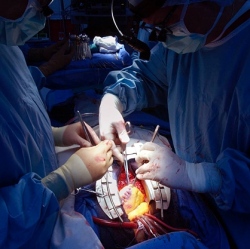
Gait disturbance in individuals with spinal cord injury is attributed to the interruption of neural pathways from brain to the spinal locomotor center, whereas neural circuits locate below and above the lesion maintain their functions. An artificial connection that bridges the pathway has potential to ameliorate the functional loss.
A Japanese research group led by Shusaku Sasada, research fellow and Yukio Nishimura, associate professor of the National Institute for Physiological Sciences, National Institutes of Natural Science has successfully made an artificial connection from the brain to the locomotion center in the spinal cord by bypassing with a computer interface. This allowed subjects to stimulate the spinal locomotion center using volitionally-controlled muscle activity and to control walking in legs. This result was published online in the Journal of Neuroscience on August 13, 2014.
Neural networks in the spinal cord, locomotion center are capable of producing rhythmic movements, such as swimming and walking, even when isolated from the brain. The brain controls spinal locomotion center by sending command to the spinal locomotion center to start, stop and change waking speed. In most cases of spinal cord injury, the loss of this link from the brain to the locomotion center causes problems with walking. The research group came up with bypassing the functioning brain and locomotion center with the computer to compensate lost pathways as a way to enable individuals with spinal cord injury to regain walking ability.
